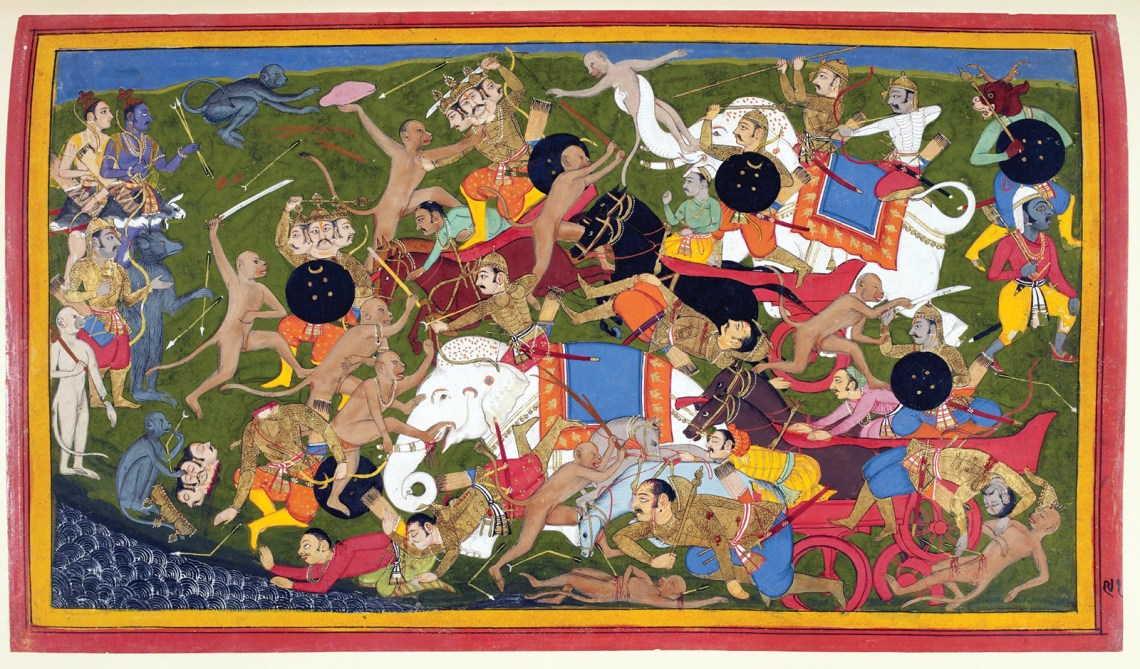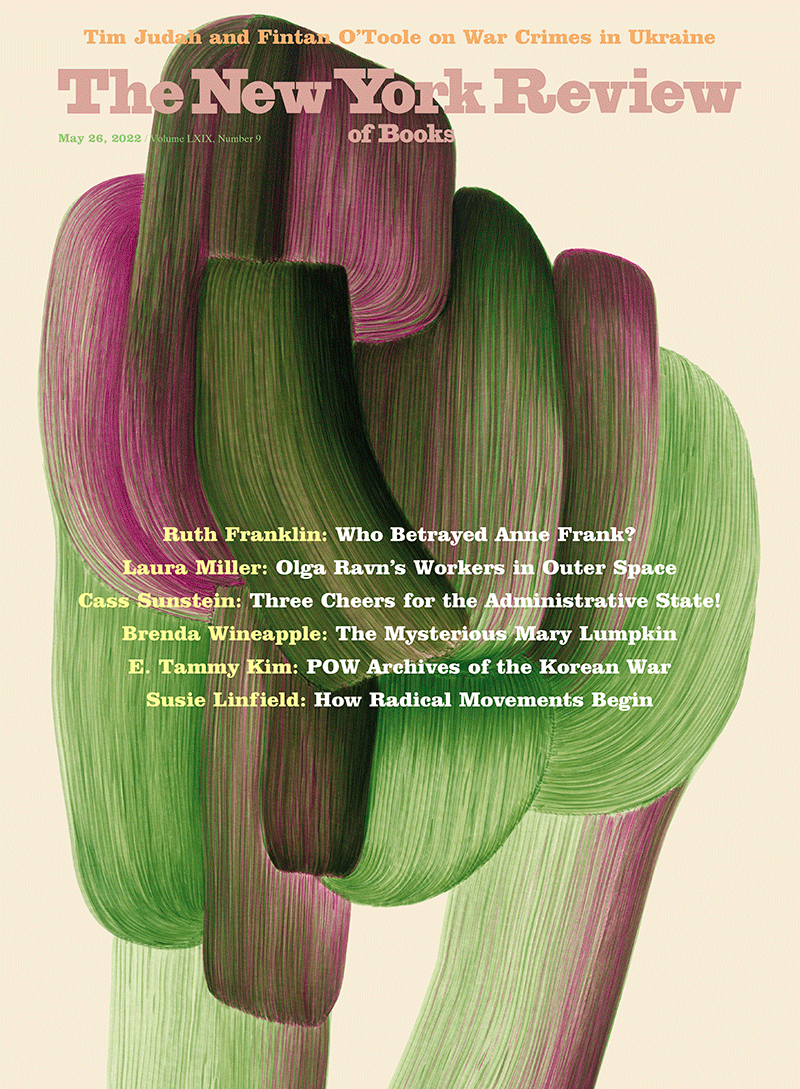In response to:
Hearing the ‘Ramayana’ Again from the April 7, 2022 issue
To the Editors:
During the recent annual meeting of the American Oriental Society, a senior Sanskrit scholar offered me a “good news, bad news” proposition. The good news was that our newly revised single-volume edition of the Princeton University Press translation of the ancient Sanskrit epic the Ramayana of Valmiki had been reviewed in this journal [Wendy Doniger, “Hearing the Ramayana Again,” NYR, April 7]. The original, seven-volume version had been published sequentially between 1986 and 2017 by a consortium of five Sanskrit scholars. As the originator of the project, I served as both a principal translator of four of the volumes and the general editor of the entire series. The translation and its annotation received glowing reviews in scholarly journals, while some volumes had been reviewed in more general publications. The Los Angeles Times Book Review listed the fifth volume as “One of the 100 Best Books of 1997,” and the translation of its first five books as reprinted by the Clay Sanskrit Library was described as “magisterial” in a review of a number of the Clay translations in the Times Literary Supplement.
Our original translation differs from all previous ones in three respects. It is the first translation of the critical edition of the text produced by the scholars at the Ramayana Department of the Oriental Institute at the Maharaja Sayajirao University of Baroda. Second, the longer publication is the first to include scholarly introductions to each volume and a dense and massive scholarly annotation dealing with all of the many textual, aesthetic, religious, social, linguistic, gender, and general issues the work raises. It is largely intended for Indological scholars and others who can, if they wish, follow the critically established text along with our translation. Third, the translation and notes are the first to be deeply informed by the readings, interpretations, and disputes of some ten copious Sanskrit-language commentaries produced by Indian savants between the thirteenth and nineteenth centuries. These matters are either lightly touched upon or ignored in the review.
Our single-volume edition of the Ramayana offers a new general introduction and a newly edited, revised, and unabridged translation of our original work. We are grateful to The New York Review for publishing Wendy Doniger’s review of the revised translation, as it brings our work to the attention of a much larger audience. Doniger does a good job in representing the passionate and even deadly responses the Rama story and its hero continue to evoke in contemporary India. So I regard her review as valuable for those interested in exploring a massively important work of a culture poorly understood in the West.
Let me turn to one issue that Doniger dwells on, the quality of our translation from an aesthetic point of view. Such things are, after all, matters of taste, but a word on the aesthetics of the epic and its translations is in order here. Although Valmiki’s Ramayana is regarded—even venerated—in the Indian literary and literary critical traditions as the very first work of poetry, it is by no means uniformly “poetic.” Additionally, it is a history of its hero, an incarnation of God on earth, and its heroine, Sita, as well as a treatise on kingship, morality, ethics, etc.
While Valmiki’s Ramayana has many beautifully figured passages describing landscapes, seasons, and the suffering of the hero and his abducted wife Sita, these are interspersed with prosaic narrative passages, long lists of flora and fauna, realia, genealogies, the names of the epic’s heroic monkeys and their demonic foes. There is no way to render such passages “poetically.” The difference in figuration is particularly notable if one compares the style and diction of the epic’s first and last books with the much more densely figured and “poetic” central books 2–6. Doniger’s invidious contrast of the poetic quality of the work between its first and second books is as much a consequence of the text itself as of the poetic prowess of the translators and editors involved. One would have thought that she would have known this, especially given the fact that the edition underwent significant stylistic revision, as we noted in its introduction.
Finally, the “bad news.” Doniger, probably by way of “disclosure,” notes that she is my cousin by marriage, even dragging our late lamented Uncle Jack and Aunt Minnie into the review on the dubious grounds that Sanskrit, like a medical condition, “runs in the family.” But since she saw fit to highlight this, she might have gone to “full disclosure.” As virtually every senior Sanskrit scholar in this country knows, Cousin Wendy and I have had a long and fraught history between us on professional and personal grounds. She might have mentioned this along with our family connection or, better still, recused herself from taking on this review.
All things considered, though, aside from some of her odd quibbles, she has done a good job in bringing the work—the product of long and hard scholarship on behalf of myself, Sally Sutherland Goldman, Sheldon Pollock, Ros Lefeber, and Bart van Nooten—to a wider public.
As for her closing quip, if we are to take it seriously, that all who wish to read the Ramayana should learn Sanskrit, then this should also hold in the case of all literary works in foreign languages and the Review could thus dispense with its entire “In Translation” section.
Robert Goldman
William and Catherine Magistretti
Distinguished Professor Emeritus
Department of South and Southeast Asian Studies
University of California at Berkeley
Berkeley, California
Wendy Doniger replies:
If scholars always recused themselves from responding to the works of colleagues with whom they had serious differences, personal and/or professional, the history of scholarship would certainly be much briefer, less lively, and far less self-correcting and cross-fertilizing than it has been. I think I was fair to the work in question, praising to the skies the seven-volume edition intended for scholars and merely arguing that the new one-volume edition will also be useful to scholars but not to general readers.
I grant that some sections of the Ramayana are more poetic than others, but I insist that even the more prosaic passages can be translated into a more lucid and naturally flowing English than this edition (with the significant exception of the volumes translated by Sheldon Pollock) offers to readers.
Finally, Cousin Bob seems not to have realized that I was making no serious academic claim but was merely joking, tongue in cheek, when I suggested that the love of Sanskrit might generally run in families and that the best solution to the problem of translating the Ramayana would be to have everyone learn Sanskrit.



